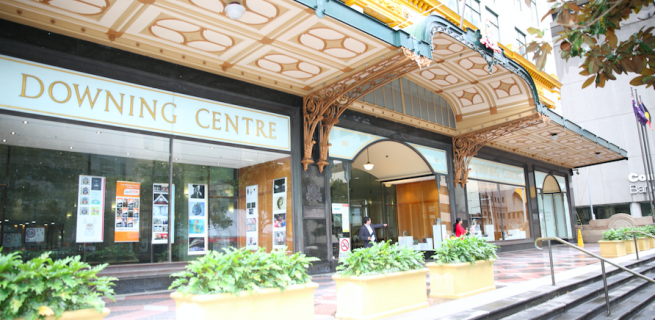Going to court for the first time can be intimidating, stressful and confusing. Knowing where and when to sit and stand isn’t always straightforward, and if you don’t have a lawyer you may be unsure about what to do.
Although local courtrooms are never identical, the role of those who work within them are generally consistent from court to court.
To give you a basic understanding of those roles, we’ve outlined ‘who’s who’ inside the NSW local court.
The Magistrate
You probably already know that the Magistrate makes decisions about your case – including whether you are guilty or not guilty, and your penalty if you are guilty. The Magistrate is fairly easy to identify. He or she will be sitting at the front and centre of the courtroom directly under the coat of arms. You should address the Magistrate as ‘Your Honour’.
In some courtrooms, a Registrar will sit instead of a Magistrate. An example is courtroom 4.4 at the Downing Centre Local Court, which is called the ‘Registrar’s Court’. There are registrar’s courts in many other courthouses including Waverley, Sutherland and Bankstown. The Registrar will in sit the same place as the Magistrate and can perform a range of administrative functions; including adjourning your case to another day so that you can obtain legal advice, listing your case for a ‘sentencing hearing’, and setting it down for a ‘defended hearing’. You should simply address the Registrar as ‘Registrar’.
The Prosecutor
The prosecutor represents the interests of whoever is alleging that you have broken the law eg police or the state.
The prosecutor may not be instantly recognisable as he or she wont be wearing any type of uniform, but they will be sitting on the far left or right of the bar table (which the bench where the lawyers sit and address the Magistrate). Prosecutor will normally have a large stack of files in front of them, which contain the papers relating to the cases they will deal with on the day.
Most cases are prosecuted by police prosecutors. The police prosecutor will not be the same person that charged you with a crime. In fact, it is unlikely that any of the police officers that you previously dealt with will be at court on your first court date – they will only usually turn up if your case goes all the way to a defended hearing where witnesses are called to the stand. The police prosecutor looks after the interests of the NSW Police Force inside the courtroom and won’t normally be very familiar with your case.
If your charge is very serious, the prosecutor may be a solicitor from the Director of Public Prosecutions (DPP) instead of a police prosecutor. Solicitors from the NSW DPP fulfill a similar function to police prosecutors, but unlike most police prosecutors they will actually be lawyers and will usually know a lot more about the law.
Defence Lawyers
Criminal Defence Lawyers also sit at the bar table. Three or four criminal lawyers may be sitting at the bar table at any one time, and they will stand up when they are speaking to the Magistrate.
There may several more criminal lawyers sitting within the courtroom waiting for their turn to sit at the bar table.
Defendants
You may have seen clients in American movies seated directly next to their lawyers at the bar table, but this does not occur in NSW courts. Rather, defendants will either sit in the public seating area or in a chair behind their lawyer.
Unrepresented defendants will sit in the public area until their names are called, at which time they will approach the microphone which will normally be on a stand to the side of the bar table.
Defendants who are in custody will usually either appear on a video screen or be brought from the cells into the ‘dock’; which is a secure seating area either at the side of the courtroom or between the public seating area and the bar table.
Court Officers
Court officers are usually seated at the table in front of the Magistrate. They assist the Magistrate with general administrative tasks that are essential to the efficient operation of the courtroom, including handing documents up from prosecutors and defence lawyers, and calling witnesses from outside the courtroom.
Court Monitor
The court monitor makes an audio recording of the proceedings. He or she will usually be sitting next to the court officer, or at a desk to the side of the courtroom, and will be operating recording equipment.
Witnesses
The ‘witness stand’ is where witnesses give their testimony in court. The witness stand is normally located to the left or right of the table where the court officer sits. It usually comprises a chair behind a small desk area with a microphone on it. It will often be enclosed.
Witnesses will usually be required to sit outside the courtroom until their names are called.
So there you have it: a basic outline of who’s who in the courtroom. Hope it helps!












Just an update: RSB (the court reporter group) is now using remote monitoring in the Downing Centre, NCAT, and othe court rooms (rolling out to all NSW courts). So, there may not e someone sitting at the monitor’s desk but just a light showing on the computer at that desk.